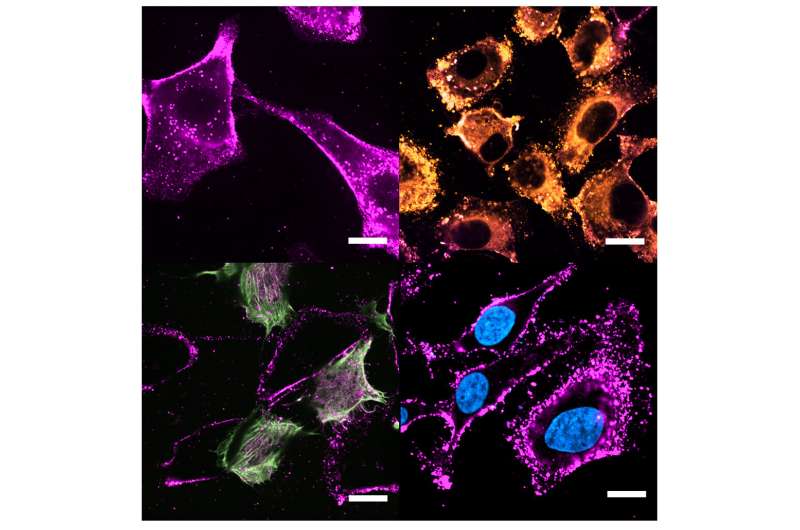This article has been reviewed according to Science X's editorial process and policies. Editors have highlighted the following attributes while ensuring the content's credibility:
fact-checked
proofread
Cell-derived nanocarriers for more efficient and direct intracellular drug release

In drug delivery, the therapeutic behavior of the nanocarriers is limited by the "foreign" character of their surface. Despite the wide range of sophisticated coatings available, immune cells often identify these synthetic nanoparticles, generating adverse responses or showing strong off-target accumulation.
In this sense, the use of biomimetic materials emerges as an alternative to circumvent this recognition and improve the effectiveness of delivery systems. Taking advantage of homotypic properties, biomimetic vectors display a higher affinity for the cell microenvironment and valuable immune escape ability.
This approach led Center for Research in Biological Chemistry and Molecular Materials (CiQUS) researchers to mimic the membrane composition of tumor cells and develop new lipid-based nanocarriers that fuse with the host cell membrane to release bioactive molecules. A very accurate combination of cationic (positive charged) and neutral lipids intercalated into the biomimetic shell provides nanocarriers with this fusogenic property and promotes its binding to the plasma membrane. The research is published in the Journal of Colloid and Interface Science.
"By combining fusogenic properties and biomimetic features we achieved intracellular localization of several types of payloads, from small molecules to large macromolecules and solid nanoparticles" said Dr. Ester Polo, CiQUS researcher and member of BioNanoTools group. This fusion allows the direct release of drugs and other molecules of interest into the cytosol, enhancing the therapeutic efficacy of the delivery system and the bio-availability of the compounds transported.
The researchers have provided the new system with a dual functionality that aims to increase the selectivity and safety of drug delivery over more conventional methods. "Due to their homotypic properties, these cell-derived nanocarriers present a high selectivity. On the other hand, the fusion capacity provided by the specific combination of lipids allows the release of the cargo much more efficiently," they said.
More information: Enrica Soprano et al, Fusogenic Cell-Derived nanocarriers for cytosolic delivery of cargo inside living cells, Journal of Colloid and Interface Science (2023). DOI: 10.1016/j.jcis.2023.06.015
Provided by Center for Research in Biological Chemistry and Molecular Materials (CiQUS)




















